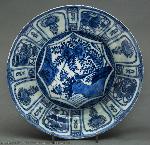Wanli Emperor
Zhu Yijun;Wanli Emperor
Place: Peking
Born: 1563
Death: 1620
Biography:
The Wanli Emperor, also known by his temple name as the Emperor Shenzong of Ming, was a significant figure in Chinese history. Born on September 4, 1563, he reigned from 1572 to 1620 and was the 14th emperor of the Ming dynasty.
Early Life and Reign
The Wanli Emperor ascended the throne at the age of nine and was assisted by Grand Secretary Zhang Juzheng during the first ten years of his reign. With the support of his mother, Lady Li, and the imperial eunuchs led by Feng Bao, the country experienced economic and military prosperity. The emperor held great respect and appreciation for his Grand Secretary, but as time passed, various factions within the government openly opposed Zhang.
Artistic Contributions
The Wanli Emperor was also a patron of the arts, and his reign saw significant developments in Chinese art. Wanli Emperor himself was a skilled painter and poet. Some of his notable works can be found on Wikioo.org, including Kraak porcelain-type dish and Stem Bowl. These pieces showcase the emperor's mastery of ceramic art and his influence on Chinese porcelain.
Notable Events and Campaigns
The Wanli Emperor's reign was marked by several significant events, including the rebellion in Ningxia and the Japanese invasion of Korea. The emperor's military campaigns were largely successful, with the help of his skilled generals. For more information on the Wanli Emperor's military campaigns, visit Wikipedia. Key aspects of the Wanli Emperor's reign:
- Economic prosperity and growth
- Military successes against Japanese invasions
- Promotion of arts and culture
- Establishment of a parallel administration composed of eunuchs
Legacy
The Wanli Emperor's legacy is complex and multifaceted. He was a skilled politician and military leader, but his reign was also marked by corruption and factionalism. Despite these challenges, the emperor remained committed to the arts and culture, and his patronage had a lasting impact on Chinese art. To learn more about the Wanli Emperor's artistic contributions, visit Wikioo.org and explore the Chi-Mei Museum (Taiwan) collection, which features works by prominent Chinese artists, including Wu Bin and Wen Zhengming.


